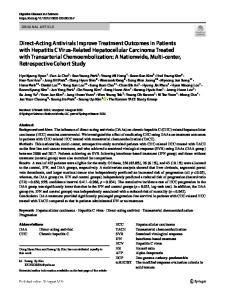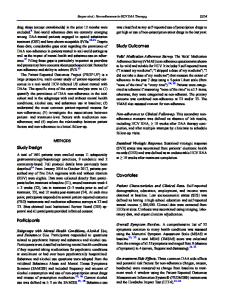Excess Weight Gain After Cure of Hepatitis C Infection with Direct-Acting Antivirals
- PDF / 457,192 Bytes
- 10 Pages / 595.276 x 790.866 pts Page_size
- 30 Downloads / 267 Views
Section of Digestive Diseases, Department of Internal Medicine , Yale University School of Medicine, 333 Cedar St, 1080 LMP, New Haven, CT, USA; Department of Biostatistics, Yale University School of Public Health, New Haven, CT, USA; 3Department of Internal Medicine, Yale University School of Medicine, New Haven, CT, USA; 4VA Connecticut Healthcare System, West Haven, CT, USA; 5Department of Laboratory Medicine, Yale University School of Medicine, New Haven, USA; 6Division of Infectious Diseases, Department of Medicine, Perelman School of Medicine, University of Pennsylvania University of Pennsylvania, Philadelphia, PA, USA; 7Center for Clinical Epidemiology and Biostatistics, Department of Biostatistics, Epidemiology, and Informatics, Perelman School of Medicine, University of Pennsylvania, Philadelphia, PA, USA.
2
BACKGROUND: Cure from chronic hepatitis C virus (HCV) infection is readily achievable with direct-acting antivirals (DAA), but little is known about optimal management after treatment. Weight gained after DAA treatment may mitigate benefits or increase risk for liver disease progression. As the single largest sample of HCVinfected individuals receiving DAA treatment in the United States, the Veterans Affairs (VA) Birth Cohort is an ideal setting to assess weight gain after DAA treatment. METHODS: We performed a prospective study of patients dispensed DAA therapy from January 2014 to June 2015. Weight change was calculated as the difference in weight from sustained virologic response (SVR) determination to 2 years later. Demographic, weight, height, prescription, laboratory, and diagnosis code data were used for covariate definitions. We used multiple logistic regression to assess the association between candidate predictors and excess weight gain (≥ 10 lbs) after 2 years. RESULTS: Among 11,469 patients, 78.0% of patients were already overweight or obese at treatment initiation. Overall, SVR was achieved in 97.0% of patients. After 2 years, 52.6% of patients gained weight and 19.8% gained excess weight. In those with SVR, weight gain was as high as 38.2 lbs, with the top 10% gaining ≥ 16.5 lbs. Only 1% of those with obesity at treatment initiation normalized their weight class after 2 years. Significant predictors of post-SVR weight gain were SVR achievement, lower age, high FIB-4 score, cirrhosis, and weight class at treatment initiation. CONCLUSION: Weight gain is common after DAA treatment, even among those who are overweight or obese prior to treatment. Major predictors include age, baseline weight, alcohol, cirrhosis, and SVR. Everyone receiving DAAs should be counseled against weight gain with a particular emphasis among those at higher risk.
Electronic supplementary material The online version of this article (https://doi.org/10.1007/s11606-020-05782-6) contains supplementary material, which is available to authorized users. Received September 30, 2019 Accepted March 6, 2020
KEY WORDS: obesity; post-SVR care; metabolic; chronic disease; natural history.
Abbreviations AASLD AUDIT-C BMI CDW HC
Data Loading...











